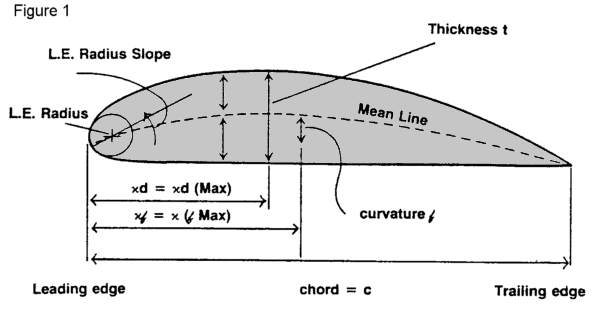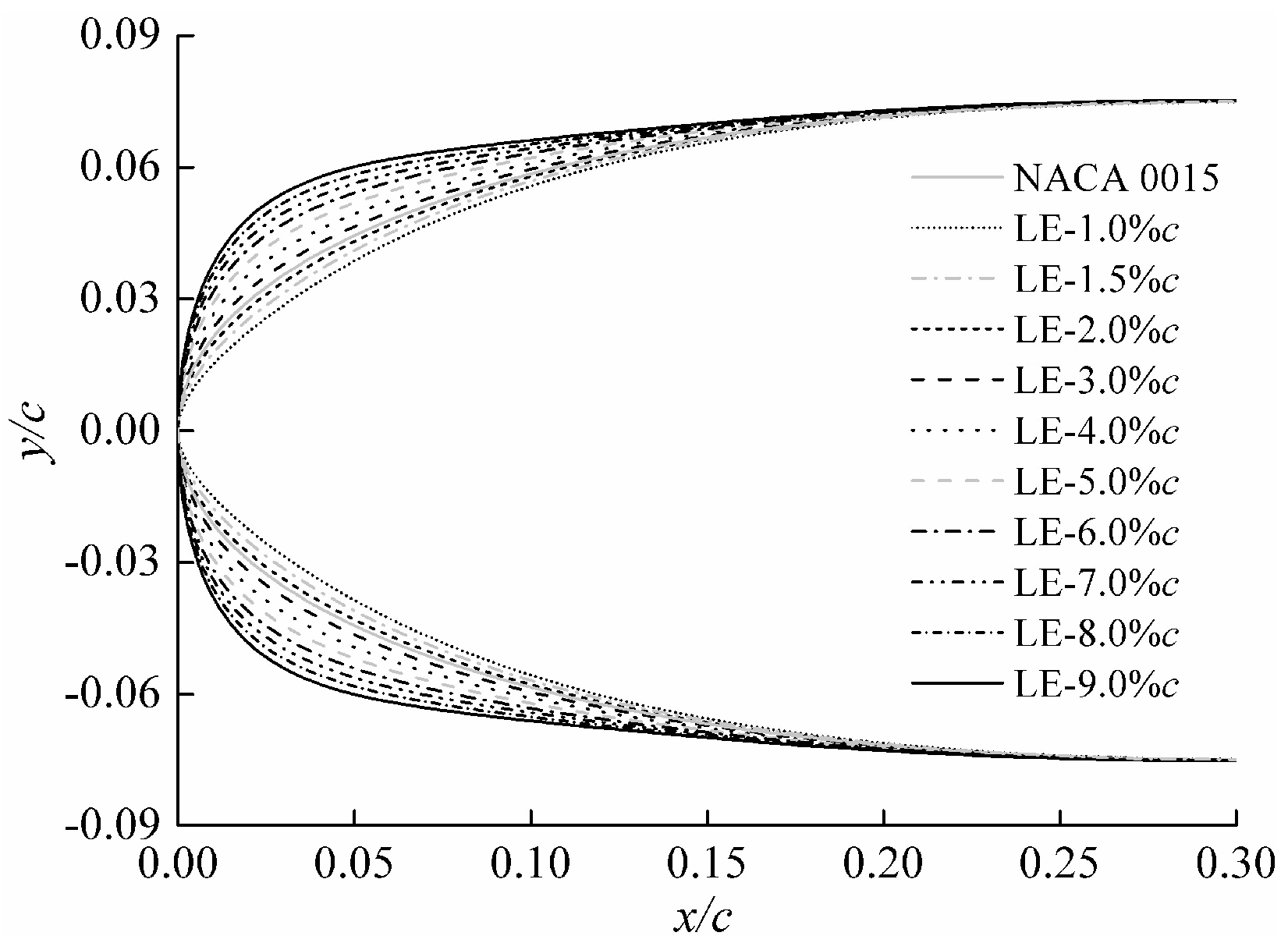
Computational Fluid Dynamics models at hypersonic as well as landing conditions are then established and discussed. First, airfoil profile is parametrically described to be more advantageous during the optimization process, and the Hicks-Henne type function is improved considering its application on the airfoil leading edge. Lift-to-drag ratio at landing condition is taken as a constraint to ensure the landing aerodynamic performance.
#Leading edge airfoil mod
The biggest enhancement of lift to drag ratio happened on Mod 2 airfoil by 13% up to 37% on Reynolds number 60.000 and by 1% up to 7% on Reynolds number to mitigate the aerodynamic heating during hypersonic re-entry, the aerothermodynamic optimization of aerospace plane airfoil leading edge is conducted. At the post-stall condition, tubercles changes the shape of separation region which is has yielded by stall cell. At pre-stall condition, separation occurs only at the region with the same direction as trough region. The profile of the streamline and pressure contour shows that separation region changed when the leading edge of airfoil modified by tubercles. The result of investigation shows that modified bionic airfoil based on long-eard owl using leading edge tubercles reduces the lift coefficient on the pre-stall regime and post-stall regime compared airfoil without tubercles. The characteristics of streamline profile and pressure conture from that airfoil have been analysied based on simulation result. The investigation has conducted numerically using computational fluid dynamics with variation of Reynolds number 60.000 and 120.000.

Modification toward airfoil using 3 variation shape of tubercles which each of them has amplitude 0,025c, 0,050c, and 0,12c. The aim of this research is to try to investigate aerodynamically toward long-eared owl mairfoil modification using leading edge tubercles as flow separation control for delaying stall on airfoil. Peningkatan rasio gaya angkat terhadap gaya seret terbesar terjadi pada airfoil Mod 2 sebesar 13%sampai dengan 37% pada bilangan Reynolds 60.000 dan 1% sampai dengan 7% pada bilangan Reynolds 120.000.=Bionic airfoil based on long-eared owl is an airfoil that extracted from long eared owl wing and it has been implemented as blade for enhancing wind turbine efficiency. Sedangkan untuk kondisi post-stall, tubercles mengubah bentuk daerah separasi yang diakibatkan oleh stall cell. Pada kondisi pre-stall, separasi hanya terjadi secara merata pada daerah yang searah dengan trough. Profil aliran dan kontur tekanan di sekitar permukaan airfoil menunjukkan bahwa daerah separasi berubah ketika leading edge dimodifikasi menggunakan tubercles.

Hasil investigasi menunjukkan bahwa airfoil bionik berbasis long-eared owl yang telah dimodifikasi menggunakan leading edge tubercles mengalami reduksi koefisien angkat dan seret pada kondisi pre-stall maupun post stall dibandingkan dengan airfoil tanpa tubercles.

Karakteristik, profil aliran dan kontur tekanan dari airfoil tersebut dianalisa berdasarkan hasil simulasi. Investigasi dilakukan secara numerik menggunakan komputasi dinamika fluida pada bilangan Reynolds 60.000 dan 120.000. Modifikasi terhadap airfoil menggunakan tiga variasi bentuk tubercles dengan amplitudo masing-masing 0,025c, 0,050c, dan 0,12c. Penelitian ini mencoba menginvestigasi secara aerodinamika terhadap modifikasi airfoil long-eared owl menggunakan model leading edge tubercles sebagai flow separation control untuk mengatasi kondisi stall pada airfoil. Airfoil bionik berbasis long-eared owl adalah airfoil yang diekstraksi dari sayap burung long eared owl dan telah diterapkan sebagai blade untuk meningkatkan efisiensi turbin angin.


 0 kommentar(er)
0 kommentar(er)
